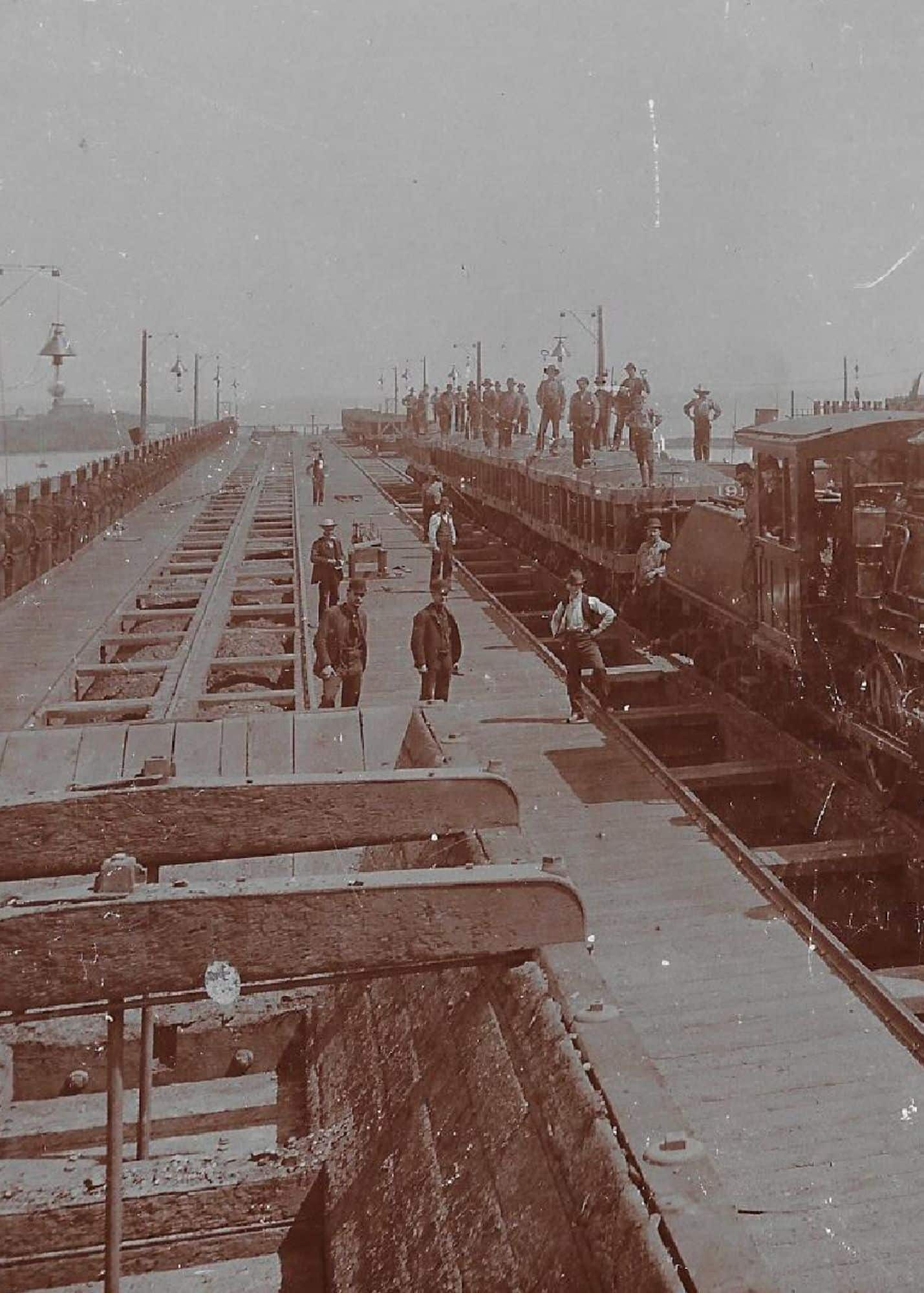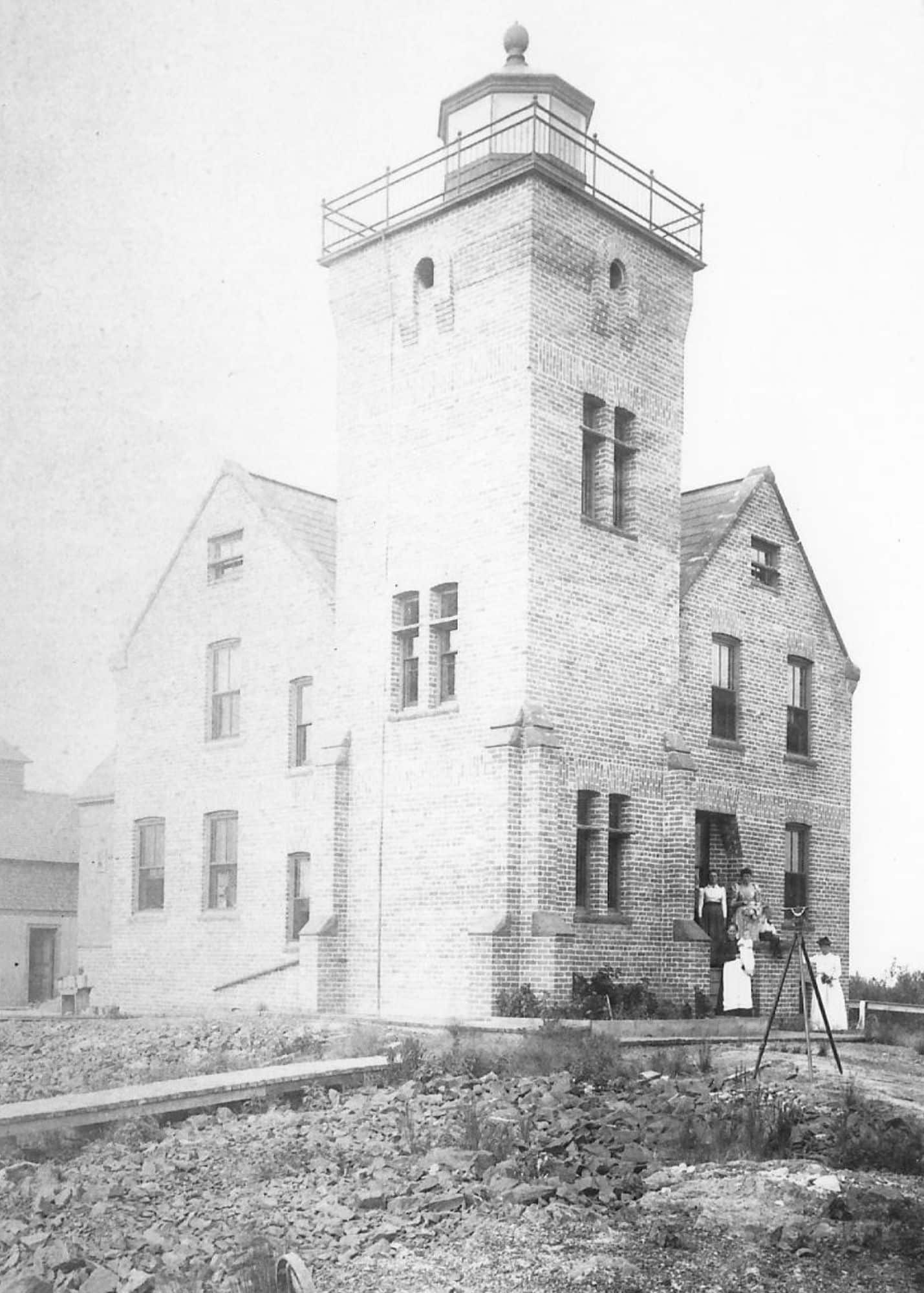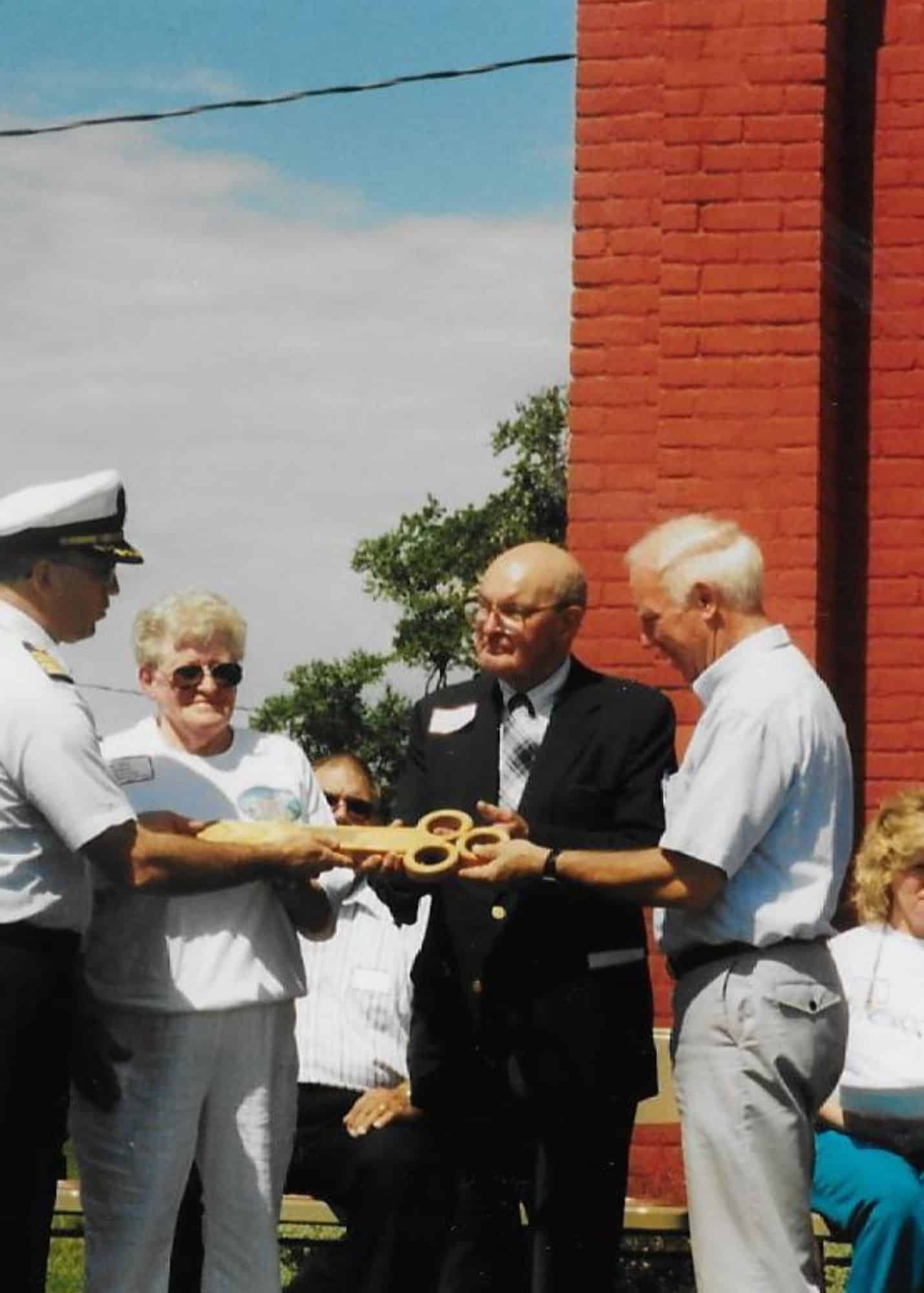
The first docks were finished in Agate Bay in 1884 with the first shipment of ore on August 19th, 1884. By 1885, roughly 225,000 tons of iron ore were being shipped out from the docks at Agate Bay. The increase in shipping traffic in the bay led to a request by the Vessel Owners Association and the US Lighthouse Association to request a lighthouse be built to safely guide ships in and out of the harbor.
August 4th, 1886 US Congress authorized $10,000 be spent to construct a light station with a keeper’s quarters and fog signal building. It was determined that the rocky peninsula on the East side of Agate Bay was chosen as an appropriate site of the tower. July 13, 1891 the plot was cleared for construction and 600 tons of bedrock were blasted out of the point to form the foundation of the lighthouse. Temporary buildings were built of wood including a construction office, barn, kitchen, and storage shed. During construction, the crew stayed on the second floor of the barn which was turned into an assistant keeper’s house in 1894.
The fog signal building, keepers quarters, and tower were completed in November 1891, near the end of the shipping season. April 15th, 1892 the lighthouse was lit for the first time, signaling the start of the shipping season. The first Two Harbors Keeper was Charles Lederle who served the station for over 20 years. In addition to the head keeper, there were normally two assistant keepers assigned to Two Harbors to make sure the light was lit 24 hours a day.
The 49.6 foot tower is made of red brick and the head keeper’s residence is attached. It towers 78 feet above the surface of Lake Superior and is 12 feet squared. The Two Harbors Lighthouse complex has a total of six structures: Lighthouse Tower with the attached Keeper’s Quarters, the Assistant Keeper’s House, the Fog Horn Signal Building, the Oil House, the lift station landing and a garage. In addition to the original buildings the historical society has added the pilot house from the Frontenac Ore Freighter as an additional exhibit space for the lighthouse museum.
The light station was originally equipped with a fourth order Fresnel lens, consisting of a series of mirrored prisms that rotated around a fixed flame supplied by an oil lamp. It was a full time job to keep the prisms cleaned, wicks trimmed, and oil filled. As electricity made its way along the north shore in the early 20th century and more lighthouses appeared in the Great Lakes, in 1915 the Two Harbors signature pattern was: 0.4 second flash, 4.6 second dark, 0.4 second flash, and 14.6 second dark. This 20 second pattern was repeated three times per minute.
In 1921, the beacon became electrified and drastically changed the duties of the Keepers at the station. The Fresnel lens remained until 1969 when it was replaced by a DCB-224 aerobeacon. The original Fresnel lens is currently on display inside of the keeper’s quarters on loan from the United States Coast Guard. The Two Harbors Light Station was operated under the United States Lighthouse Service until 1939 when the division was incorporated into the United States Coast Guard. The US Coast Guard continued to staff the station until the 1980s when the light became automated from the Duluth Station. The automated light was a stationary flashing strobe, a noticeable change from the sweeping signature of the light. The Lake County Historical Society began to provide tours of the Light Station in 1988 when it was granted a lease by the US Coast Guard.


In the late 1990s, Joe Zastera was a driving force in securing the DCB 224 beacon to restore the original sweep of the lens. The beacon dated to 1969 and was repurposed from another lighthouse prior to installation at the Two Harbors Lighthouse. Refurbished with help from the community, a boom truck from Aspen Equipment lifted parts of the beacon to the crow’s nest, nearly 50 feet off the ground. Fom there, volunteer keepers Leon Jacobson, Tom Koehler, Todd Ronning, and Brad Ronning along with members of the coast guard re-assembled the beacon inside of the lighthouse tower. For the past 20 years, the volunteer keepers have been maintaining, repairing, and keeping the beacon lit. On November 25th, the beacon had a failure that could not be repaired.
On July 11, the four volunteer lighthouse keepers were able to remove the non functioning DCB 224 beacon. This is a major step in re-lighting the Two Harbors Lighthouse. A new Maxiluna-300 beacon was be installed. Visitors will note the iconic light sweep is replaced with a flashing beacon. In 2020, the Keep the Light Lit fundraising initiative was launched to raise an estimated $70,000 to purchase and install a modern rotational beacon which will restore the iconic sweep and signature of the light to the Two Harbors Shoreline.
The Lake County Historical Society began to provide tours of the Light Station in 1988 when it was granted a lease by the US Coast Guard. In 1999, the Society appealed to Congressman Oberstar and through a bill passed in congress, the ownership of the Two Harbors Lighthouse was transferred to the Lake County Historical Society. August 21st, 1999 the Lake County Historical Society celebrated the transfer of ownership for the Two Harbors Lighthouse from the United States Coast Guard to the Lake County Historical Society. As caretakers of the lighthouse, the Lake County Historical Society is responsible for the upkeep of the buildings and the light. To help fund the upkeep for the light and interpretation of the vast history of Lake County, Minnesota, the Lighthouse Bed and Breakfast opened in 1999 providing guests an opportunity to live like the lighthouse keepers would have at the turn of the century.
Currently the Two Harbors Light Station is still designated as an active aid to navigation and is on navigational charts, as well as being a museum. The Two Harbors Light Station is listed on the National Register of Historic Places. For more on the history of the Two Harbors Light Station and its keepers we suggest The Light on Agate Bay by Dale R. Congdon. Available from the Lake County
Established in 1999, the Lighthouse B&B is located in the oldest, continuously operating lighthouse on the North Shore. Be Keeper for a evening at our B&B!